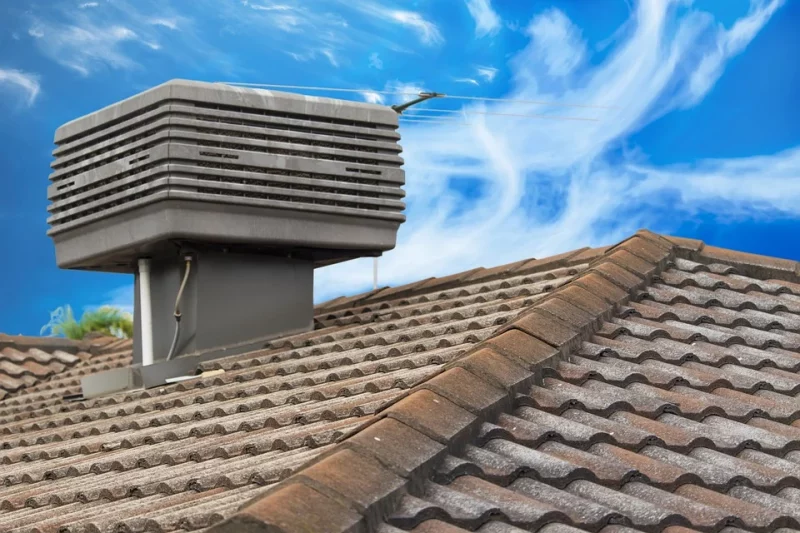Do you want to know what is a convector heater? Don’t worry, and you have arrived at the right place. A convection heater, also described as a convector heater, is a kind of heater which heats and circulates air using convection currents. Electrical currents flow through the appliance’s structure and over the heat source.
Recognizing the significance of thermal conduction, that action warms the air, lowering its volume in comparison to cooler air and forcing it to ascend.
When heated air particles ascend, colder air particles fall towards the heating appliance, displacing them. As a result, the evacuated colder air becomes heated, loses volume, rises, and continues the process. Convectors are suitable for big windows, such as those seen in businesses, colleges, and conference halls. Convectors offer some upward flow of air to offset cold downdrafts and decrease moisture. They are often positioned at floor areas on outer walls or under openings. Keep reading to learn more.
Convector Heater-Working Principle
So, what is a convector heater? Using the natural occurrences of “convection,” air inside the convector is heated. It becomes less dense than the chilly air around it, allowing it to increase due to gravity. The colder airflow on the ground is sucked into the convector as the warm air increases, steadily generating. This heated air climbs and prevents the downward flow of cooler air when convectors are placed under a window, forming a hot air veil. This component and over-temperature restriction are two aspects in every convector that work to distribute hot air to the room properly.
The element transforms electrical energy into warmth by transmitting an electrical current via a specially constructed cable. Metal-sheathed convector elements are made up of a spiral wound resistance cable encased inside an insulation material (Magnesium Oxide) and coated in a metal sheathing. Fins were placed to a component rod to promote heat transmission by generating a smokestack action, causing air to circulate over the component and heating the air flowing through the device through the bigger fin surface.
Aluminum fins are pressure welded to the rod in just about all convection heaters. On the other hand, heavily loaded and explosive decompression convectors feature unique iron fins hardened steel to the rods to meet increasing demands.
Temperature-sensing machines installed onto and around the component, known as over-temperature restrictions, halt the supply of power to the element if it becomes scorching. Whenever draperies or furnishings obstruct an air intake or outlet valve in a convector, its over-temperature limit mechanism has been most usually engaged, allowing heat to pile up. Convectors can be used in lounges in the same way they are in big open workplaces, with the exception that people would walk around much more in lounges. The working principle of a convector heater helps you understand what a convector heater is.
Convector Heater-Types
The most frequent way to classify convection heaters is by their power source. Ignition or gas-fired heaters utilize propane, gas, or another sort of fuel, whereas electrical convection heaters consume electrical energy. Metallic spirals, nickel-chromium, resistive wire, thermally fluid, or ceramics are commonly used as heating elements in convection heaters.
#1. Fan heater
Fan heater blends the warmth of a heater with the air dispersal capabilities of a fan. After the advent of tangent fans in the mid-1960s, the first fan heaters became accessible. Contemporary fan heaters come with changeable speed fans that may act freely of the heat source. Here’s where to place a space heater.
#2. Panel heater
The panel heater is a combination of electrical convection heater often used in a home or small business settings for the whole area heating. They’re frequently confused with electric radiators that use radiant heating to transmit heat directly to things rather than the air. Panel heaters are usually used with another type of basic or centralized heating system. These are frequently equipped with temperature and time controllers.
#3. The institutional heater
The institutional convector heaters were massive warmers intended for industrial and commercial applications. Its design is intended to cover a greater surface area.
#4. Gas-fired convector heater
Gas-fired convection heaters operate without electrical energy and rely on a gas pipeline. The large surface area of gas burners, air filtration, gas faucets, a fan, and a thermostat make up these heaters.
Convector Heater-Running Cost
While the expense of heating the house or apartment in the wintertime might be inconvenient, convection heaters are relatively inexpensive. They can reduce the amount of money on the heating costs. “A typical convection heater consumes 1400 watts of power per hour. Local electricity prices determine the cost of using the heater. According to national averages, using a convection heater might cost roughly $0.30 per hour. Compared to other heaters, it will save a great deal of money because you’ll just be warming one bedroom rather than the rest of the house. You may also want to read how much does it cost to run a space heater 1500w.
It’s A Wrap!
We are delighted to know that you have learned what is a convector heater. This article includes different facts about convector heaters. Before installing the convector heater, you first need to check which one is better for you and low in cost. Thank you, friends, for sticking with us!

